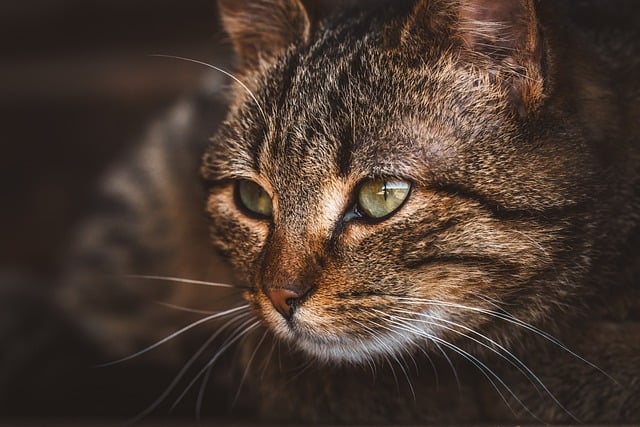Purring Through Time: Lessons from Historic Felines to Raise a Well-Behaved Cat
Purring Through Time: Lessons from Historic Felines to Raise a Well-Behaved Cat
Cats have been revered, admired, and sometimes even worshipped throughout history. From ancient Egypt to modern-day households, these enigmatic creatures have captured the hearts of many. As we delve into the stories of famous and legendary cats, we uncover timeless lessons that can help us raise well-behaved and happy feline companions. This article explores key insights, expert advice, and interesting facts to guide you in nurturing a harmonious relationship with your cat.
The Legacy of Historic Felines
Throughout history, certain cats have stood out due to their unique stories and characteristics. These legendary felines offer valuable lessons for modern cat owners:
- Bastet of Ancient Egypt: In ancient Egypt, cats were associated with the goddess Bastet, symbolizing home, fertility, and protection. Egyptians valued cats for their ability to control vermin and their graceful demeanor. Bastet teaches us the importance of respecting a cat’s natural instincts and providing an environment where they can thrive.
- Trim, the Seafaring Cat: Trim was the beloved companion of explorer Matthew Flinders during his circumnavigation of Australia. Known for his adaptability and courage, Trim highlights the importance of socialization and resilience. To nurture a well-behaved cat, expose them to various environments and experiences early on.
- Hodge, Dr. Johnson’s Cat: Hodge was famously adored by his owner, Samuel Johnson. Johnson’s affection for Hodge demonstrates the value of companionship and understanding. Paying attention to your cat’s unique personality and preferences can help foster a deep bond and a well-adjusted pet.
Key Insights and Expert Advice
Raising a well-behaved cat involves understanding feline behavior and creating a supportive environment. Here are some expert tips:
- Understanding Feline Behavior: Cats are independent creatures with distinct behaviors. Recognizing signs of stress, discomfort, or contentment is crucial. Experts suggest observing body language, such as tail position, ear movement, and vocalizations, to gauge your cat’s mood.
- Creating a Stimulating Environment: Cats are natural hunters and need mental and physical stimulation. Provide toys, scratching posts, and interactive playtime to keep them engaged. A well-stimulated cat is less likely to develop behavioral issues.
- Positive Reinforcement Training: Training your cat using positive reinforcement techniques, such as treats and praise, can enhance their behavior. Rewarding desired behaviors encourages repetition and builds a strong bond between you and your cat.
- Proper Nutrition and Health Care: A balanced diet and regular veterinary check-ups are essential for your cat’s well-being. Nutrition impacts behavior, so ensure your cat receives high-quality food suited to their age and health needs.
Interesting Facts About Cats
Enhance your understanding of cats with these intriguing facts:
- Super-Sensitive Whiskers: A cat’s whiskers are highly sensitive and help them navigate their environment. Avoid trimming them as they play a crucial role in spatial awareness.
- Purring Power: Cats purr for various reasons, including relaxation and self-soothing. Studies suggest that purring may have healing properties, promoting bone density and recovery.
- Night Vision Superheroes: Cats have excellent night vision, allowing them to see in near darkness. This adaptation is due to a high number of rod cells in their retinas.
Actionable Advice for Cat Owners
To implement these insights and ensure a well-behaved cat, consider the following steps:
- Observe and Adapt: Spend time observing your cat’s behavior and adapt your approach to meet their needs. Tailor your interactions based on their reactions.
- Introduce Gradually: When introducing new people, pets, or environments, do so gradually. Allow your cat to adjust at their own pace to minimize stress.
- Engage in Regular Play: Dedicate time each day for interactive play sessions. Use toys that mimic prey to satisfy their hunting instincts.
- Provide Safe Spaces: Ensure your cat has access to quiet, secure areas where they can retreat and relax when needed.
- Consistency is Key: Maintain consistent routines and boundaries to help your cat feel secure and understand expectations.
Conclusion
By drawing inspiration from historic felines and following expert advice, you can cultivate a rewarding relationship with your cat. Understanding their behaviors, providing a stimulating environment, and employing positive reinforcement are key strategies in raising a well-behaved cat. Remember, each cat is unique, and patience, love, and respect will go a long way in ensuring their happiness and well-being.
#ChatGPT assisted in the creation of this article.




Post Comment